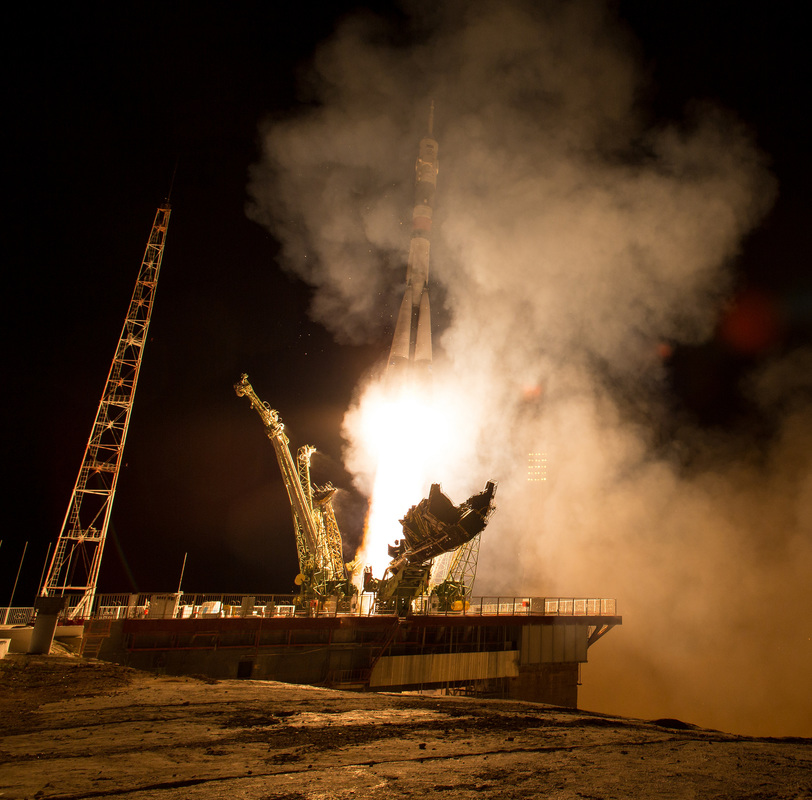Soyuz FG – Launch Vehicle
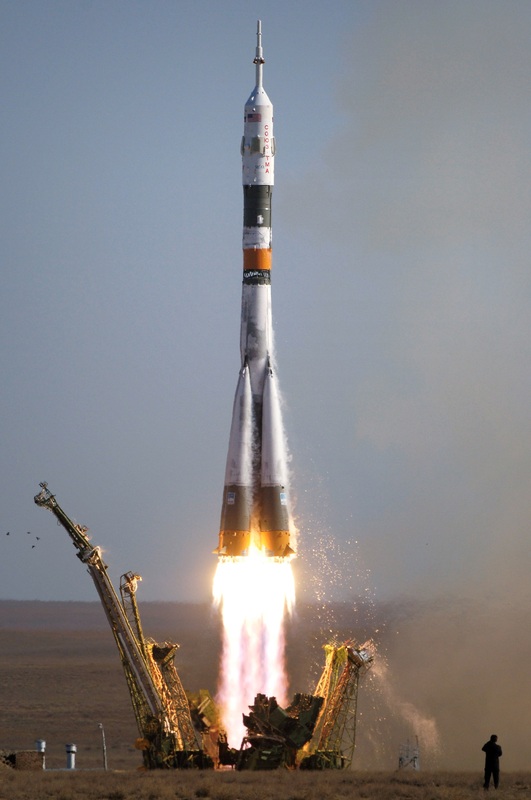
The Soyuz FG is a medium-lift launch vehicle qualified for crewed launches and used to deliver Soyuz Spacecraft to Orbit for Missions to the International Space Station. The vehicle is a member of the Soyuz Rocket Family that has a history dating back to 1957.
Soyuz launchers have been derived from the R-7 missile that was developed during the Cold War making 28 launches between 1957 and 1961. There have been various different versions of the Soyuz Launcher; currently a number of different configurations is available to serve a variety of purposes from crewed launches, cargo missions and hauling satellites into orbit.
Soyuz FG was introduced in 2001 and is based on the Soyuz-U Launcher which has been modified to provide performance and safety improvements required for human space flight. Soyuz FG is manufactured by TsSKB-Progress and operated by RSC Energia and Roscosmos. The vehicle launches exclusively from the Baikonur Cosmodrome. Most of its launches were indeed crewed space flights using the Russian Soyuz Spacecraft for missions to ISS, but the Soyuz FG launcher was also available for commercial and government flights to deliver payloads to a variety of Orbits by adding a Fregat Upper Stage to the Vehicle.
Soyuz FG is a three-stage rocket utilizing a core stage which burns through the first and second stage portions of the flight. Stage one is comprised on the Core Stage and four strap-on boosters. Core Stage, Boosters and third stage all use Kerosene and Liquid Oxygen as propellants.
To date, Soyuz FG made over 50 flights, all of which were completed successfully. Other Versions of the Soyuz Rocket include the Soyuz-U for Progress Flights to ISS and the improved Soyuz 2 variants employed for a variety of missions including commercial launches.
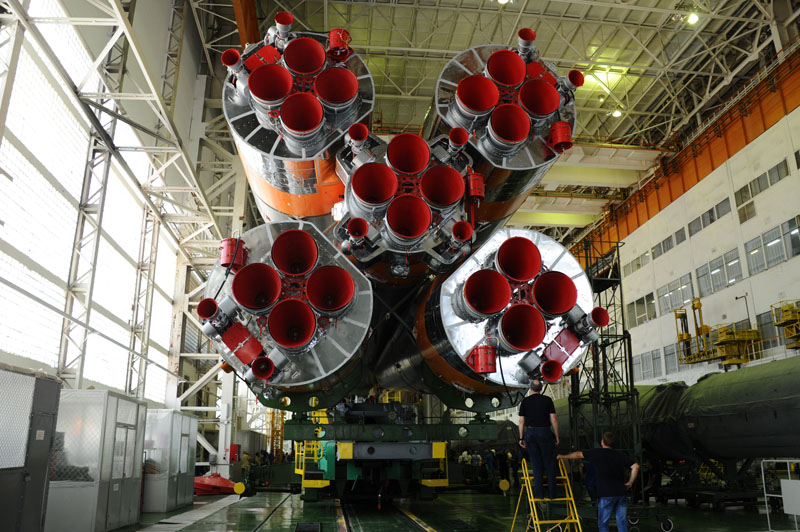
| Type | Soyuz FG |
| Manufacturer | TsSKB-Progress |
| Height | 49.5m |
| Diameter | 2.68m |
| Launch Mass | 305,000kg |
| Stages | Boosters + 2 Stages |
| Boosters | 4 |
| Mass to LEO | 7,200kg |
| Success Rate | 100% |
Soyuz FG Specifications
The Soyuz-FG Vehicle stands 49.5 meters tall and has a main diameter of 2.95 meters and a maximum diameter of 10.3 meters.
All stages of the vehicle use Rocket Propellant 1 (Rocket-Grade Kerosene) and Liquid Oxygen as propellants.
Liftoff mass is about 305,000 Kilograms. The FG version of the Soyuz can deliver payloads of up to 7,100 Kilograms to Low Earth Orbit. The Vehicle features a Launch Escape System to maintain high safety standards for manned space flight.
Boosters
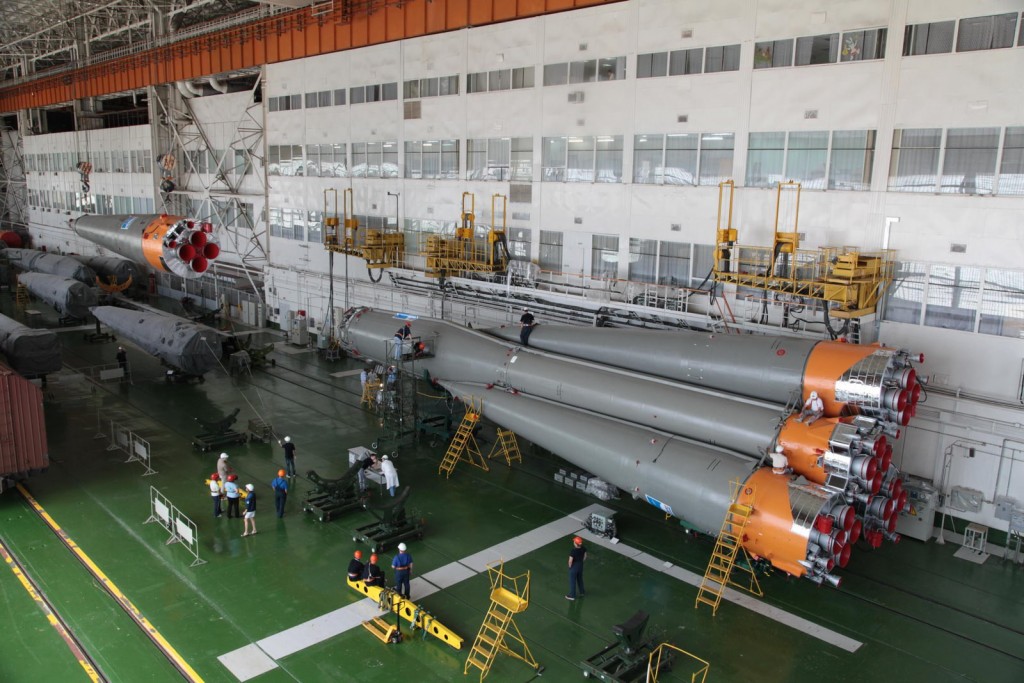
| Boosters | 4 |
| Diameter | 2.68m |
| Length | 19.6m |
| Empty Mass | 3,810kg |
| Fuel | Rocket Propellant 1 |
| Oxidizer | Liquid Oxygen |
| Fueled Mass | 43,410kg |
| Guidance | From 3rd Stage |
| Tank Pressurization | Nitrogen |
| Propulsion | 1 RD-107A |
| Propellant Feed | Turbopump |
| Comb. Chambers | 4 |
| Total Thrust SL | 838.5kN |
| Total Thrust Vac | 1,021kN |
| Engine Length | 2.58m |
| Engine Diameter | 1.85m |
| Engine Dry Weight | 1,090kg |
| Burn Time | 118s |
| Specific Impulse | 264s (SL) 310s (Vac) |
| Chamber Pressure | 60bar |
| Throttle Capability | Yes |
| Engine Start | Spark |
| Restart Capability | No |
| Ox to Fuel Ratio | 2.47 |
| Attitude Control | 2 Vernier Thrusters |
| Shutdown | Commanded Shutdown |
Soyuz FG is outfitted with four liquid fueled strap-on boosters providing extra lift during the initial phase of the flight.
All four boosters are ignited before liftoff to reach full thrust and are jettisoned once their fuel tanks are empty. The boosters are arranged around the central Core Stage and are tapered cylinders. The Oxidizer Tank is in the tapered portion of the booster while the fuel tank is inside the cylindrical portion. Each booster holds a total of 39,600 Kilograms of Propellants which are Liquid Oxygen and Rocket Propellant 1.
A Soyuz Booster is 19.6 meters in length and 2.68 meters in diameter. An RD-107A Engine is installed on each booster providing a thrust of 838.5 Kilonewtons at Liftoff. The engine utilizes a spark ignition system and can not be re-started. RD-107A features four combustion chambers that are fed by a Turbopump transferring 91 Kilograms of Kerosene and 226 Kilograms of Oxygen every second.
Several auxiliary pumps are used to keep the Propellant Tanks at flight pressure by feeding them with Nitrogen. Another pump delivers Hydrogen Peroxide to the main pump that is used to power it. A total of 1,190 kilograms of Hydrogen Peroxide and 280 Kilograms of liquid Nitrogen are stored inside spherical tanks and are expended during ascent for the aforementioned purposes.
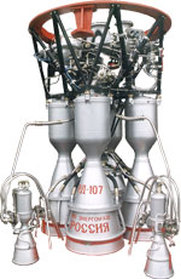
The Turbopump spins at over 8,000rpm at flight speed. The four nozzles of the RD-107 can not be gimbaled, but the engine is outfitted with two vernier jets that can be used for attitude control. Also, an aerofin is installed on the base of the booster and also contributes to attitude stability.
The engine has a dry weight of 1,090 Kilograms and is 2.58 meters in length and 1.85 meters in diameter. All boosters ignite about 20 seconds before launch to allow the Turbopumps to spin up to flight speed. Also, the engines are being monitored during that period to make sure performance is nominal.
The Boosters Burn for 118 seconds following liftoff before being separated from the launch vehicle and impacting downrange.
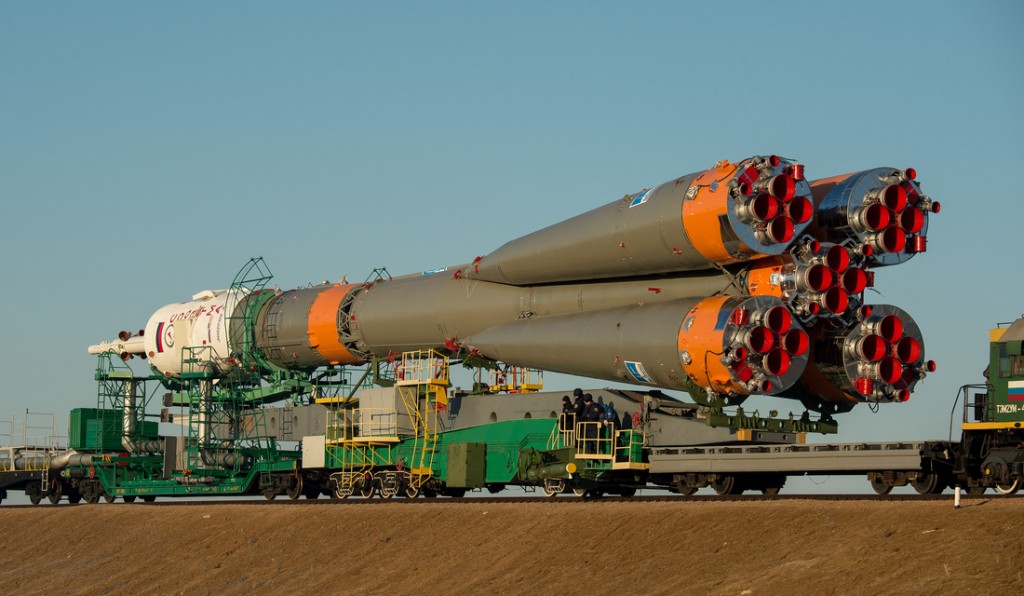
Core Stage
| Diameter | 2.95m |
| Length | 27.8m |
| Empty Mass | 6,550kg |
| Fuel | Kerosene |
| Oxidizer | Liquid Oxygen |
| Fueled Mass | 99,500kg |
| Guidance | From 3rd Stage |
| Propulsion | 1 RD-108A |
| Engine Type | Gas Generator |
| Propellant Feed | Turbopump |
| Total Thrust SL | 792kN |
| Total Thrust Vac | 990kN |
| Engine Length | 2.87m |
| Engine Diameter | 1.95m |
| Engine Dry Weight | 1,075kg |
| Burn Time | 280s |
| Specific Impulse | 258s (SL) 321s (Vac) |
| Chamber Pressure | 54.43bar |
| Ox to Fuel Ratio | 2.39 |
| Throttle Capability | Yes |
| Engine Start | Spark |
| Restart Capability | No |
| Ox to Fuel Ratio | 2.47 |
| Attitude Control | 4 Vernier Thrusters |
| Shutdown | Commanded Shutdown |
The Core Stage of the Soyuz Vehicle acts as both, first and second stage. It is ignited prior to blastoff and continues to power the launcher after Booster Jettison as the second stage.
The Core Stage is 27.8 meters long and 2.95 meters in diameter. It is equipped with a large Oxidizer Tank and a Fuel Tank beneath it, both holding a total of 92,950 Kilograms of Propellants. Where the boosters interface with the core stage, a load carrying ring is installed to transfer loads from the boosters to the vehicle.
On top of the core stage is a Truss Segment that interfaces with the upper stage and includes stage separation mechanisms.
The core stage is powered by a RD-108A Engine which is similar to the Booster Main Engine. It also features four combustion chambers and the same pump design. the main Turbopump is also powered by Hydrogen Peroxide. 2,600 Kilograms are consumed during the burn of the stage. 520 Kilograms of liquid Nitrogen are used to keep the Propellant Tanks at flight pressure during the ascent.
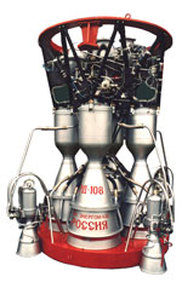
RD-108A provides 792 Kilonewtons of Thrust at Launch. Vacuum Thrust is 990 Kilonewtons. The Engine has a dry weight of 1,075 Kilograms and operates at a chamber pressure of 54.43 bar. Four Vernier Engines can be gimbaled to provide three-axis-attitude control during the ascent phase of the mission. The first stage is ignited 20 seconds before liftoff for performance monitoring.
The Stage burns for 290 seconds before separating from the third stage. The two stages are separated by igniting the third stage to push the core stage away from the stack. During second stage flight, the protective Payload Fairing and Launch Escape Tower are jettisoned to increase launcher performance.
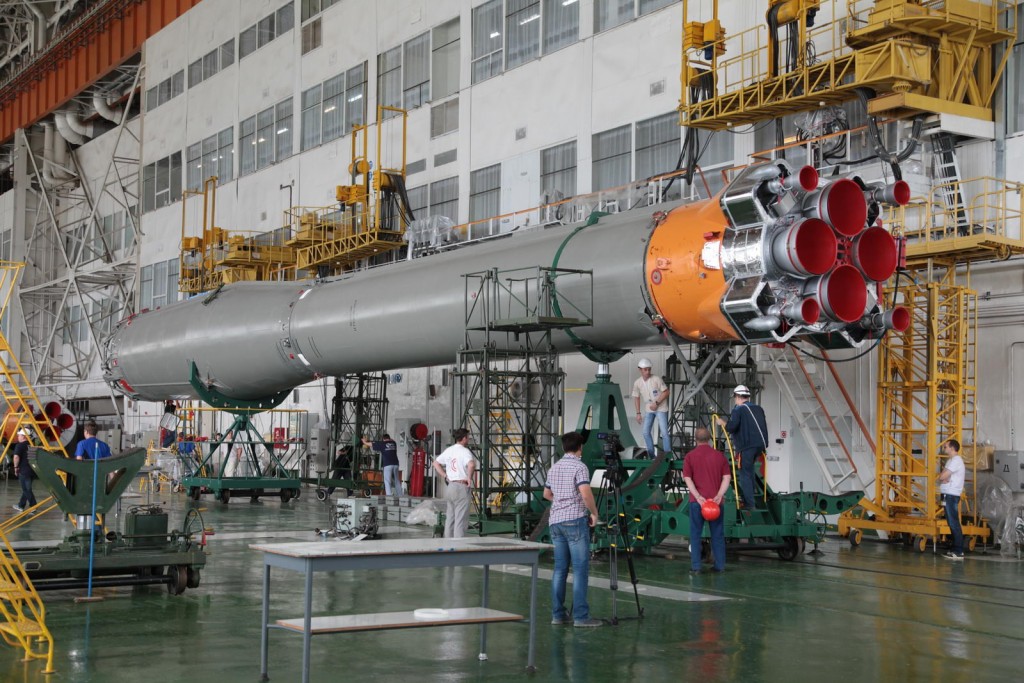
Block I Upper Stage
| Diameter | 2.66m |
| Length | 6.74m |
| Empty Mass | 2,410kg |
| Fuel | Rocket Propellant 1 |
| Oxidizer | Liquid Oxygen |
| Fueled Mass | 25,300kg |
| Tank Pressurization | Oxygen Gas; Combustion Products |
| Propulsion | 1 RD-0110 |
| Engine Type | Gas Generator |
| Propellant Feed | Turbopump |
| Comb. Chambers | 4 |
| Total Thrust Vac | 297.9kN |
| Engine Length | 1.58m |
| Engine Diameter | 2.24m |
| Engine Dry Weight | 408kg |
| Nozzle Ratio | 82.2 |
| Thrust-to-Weight | 74.5 |
| Burn Time | 230s |
| Specific Impulse | 326s (Vac) |
| Chamber Pressure | 68.2bar |
| Restart Capability | No |
| Ox to Fuel Ratio | 2.2 |
| Attitude Control | 4 Vernier Jets; Reaction Nozzle |
| Shutdown | Commanded Shutdown |
The third stage of the Soyuz FG Launcher is 6.74 meters in length and 2.66 meters in diameter. It also uses the conventional design with the Fuel Tank being placed on top of the Oxygen tank.
The Avionics of the Soyuz Launcher are also installed on the Upper Stage. They provide vehicle control, telemetry and navigation for the entire flight and issue all vehicle commands autonomously. The equipment is located in the area between the two propellant tanks. The third stage tanks are capable of holding 22,890 Kilograms of Propellants. A RD-0110 Engine is installed on the upper stage.
This engine is different from the other engine types used on the Soyuz Vehicle as it is a Gas Generator Type Main Engine. It also has four combustion chambers and provides a total thrust of 297.9 Kilonewtons.
The single Turbopump of the RD-0110 is powered by gas from combustion of the main propellants, Rocket Propellant 1 and Liquid Oxygen. The Gas Generator enables the main Turbopump to spin at up to 18,400rpm.
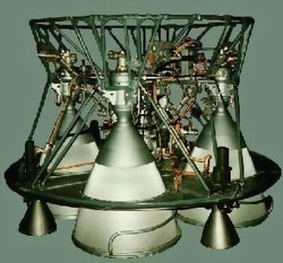
After moving through the Turbopump, the gases from the generator are recovered and used in four attitude control thrusters. Each of the thrusters provides 6 Kilonewtons of Thrust and can be gimbaled.
A reaction nozzle is mounted in the side of the stage and is used for collision avoidance maneuvers by venting the LOX Tank. Oxygen Tank pressurization is accomplished by evaporated and heated Oxygen while the RP-1 Tank is pressurized with combustion products from the Gas Generator.
RD-0110 has dry weight of 408 Kilograms. It is 1.58 meters in length and 2.24 meters in diameter. It operates at a chamber pressure of 68.2 bar. The third stage of the Soyuz burns for 300 seconds before deploying the Soyuz Spacecraft.
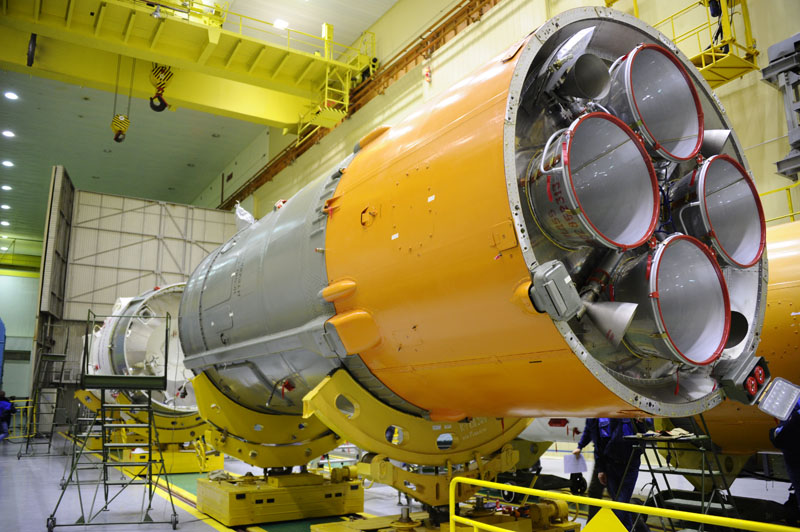
Launch Abort System
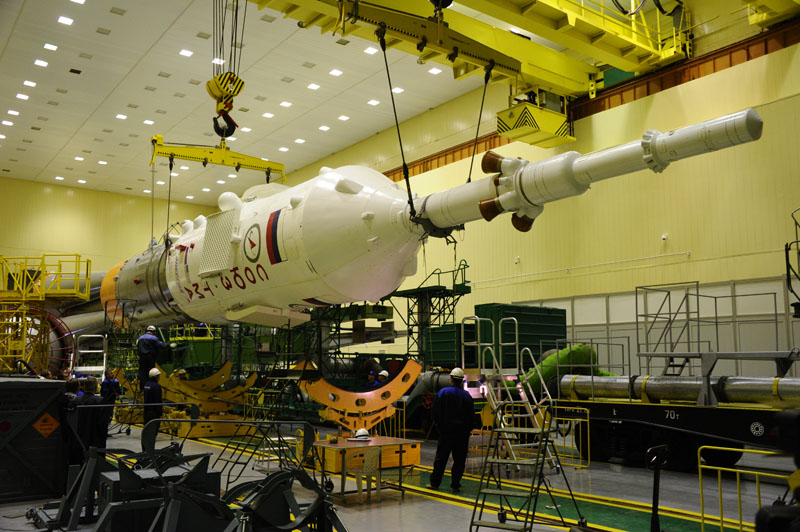
| Min. Breakout Altitude | 850 meters |
| Min. Breakout Distance | 110 meters |
| Max G Force | 10 |
| Total Thrust | 715 Kilonewtons |
| Burn Time | 6 Seconds |
Soyuz FG features Launch and Ascent Abort Capabilities during the complete ascent phase. In the early portion of the mission and while sitting on the Launch Pad, the crew can be evacuated by the use of the SAS Launch Escape System. On top of the Soyuz Rocket is a Launch Escape Tower that is used for Launch Aborts prior to liftoff and during the first 157 seconds of the flight.
The abort can be triggered by on-board computers and manually via radio signals. Events that cause an immediate launch abort include loss of control, premature booster stage separation, loss of pressure in the combustion chambers, lack of velocity and loss of thrust.
When the abort command is issued, three struts engage in the lower structural ring of the Soyuz Entry Module (The Crew is in the Entry Module for Launch and Landing with hatches to the Orbital Module closed and latched). These struts provide a stable interface with the Payload Fairing. At that point, the two Upper modules of the Soyuz are separated from the Instrumentation Module that remains attached to the Launcher.
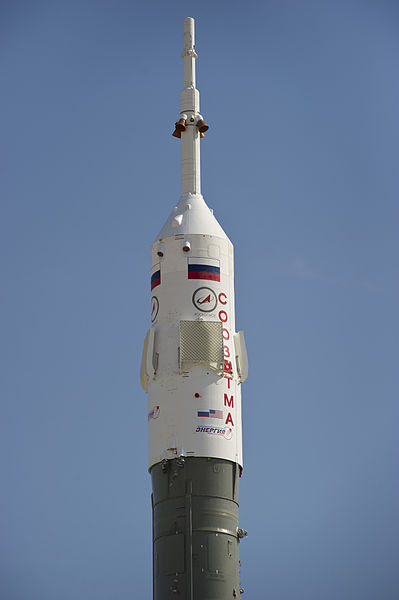
At the same time, the abort motors mounted on the Launch Escape Tower ignite and the spacecraft under the Payload Fairing is carried away from the launch vehicle. The burn has a duration of up to six seconds. The abort motors provide 723 Kilonewtons of thrust.
After burnout of the escape motors, the descent module separates from the Orbital Module and the Shroud before firing engines to drop out of the Fairing. The Entry Module deploys fast-opening parachutes and the Module’s heat shield is jettisoned to expose the Soft Landing Engines. The capsule executes a nominal landing. Should the abort occur while the vehicle is still at the pad, the SAS can lift the capsule to an altitude of 1.5 kilometers causing it to land 3 to 4 kilometers away from the rocket.
A minimum altitude of 850 meters is required to achieve full parachute deployment for a nominal landing. The minimum landing distance from the launcher is 110 meters. During the abort scenario, crew members experience up to 10 G’s. At T+157 seconds, the SAS and Payload Fairing is jettisoned. After that, a variety of abort modes are available for the Soyuz Spacecraft.
Depending on the abort scenario, different mechanisms are used to separate the Soyuz Capsule from the Rocket. After separation from the Launcher, the Soyuz conducts a commanded Module Separation and the Entry Module uses its attitude control system to place the vehicle in the correct entry attitude. The abort trajectory that takes the Soyuz to a landing point somewhere downrange the ground track, largely depends on the timing of the failure. The later an abort occurs in the ascent, the higher the G load the crew and vehicle experiences. For an abort 400 seconds in the flight, up to 21Gs occur on the way back to Earth. After Entry, the Soyuz performs nominal landing operations to bring the crew back to Earth. All abort scenarios are considered to be survivable by the crew.
Payload Fairing
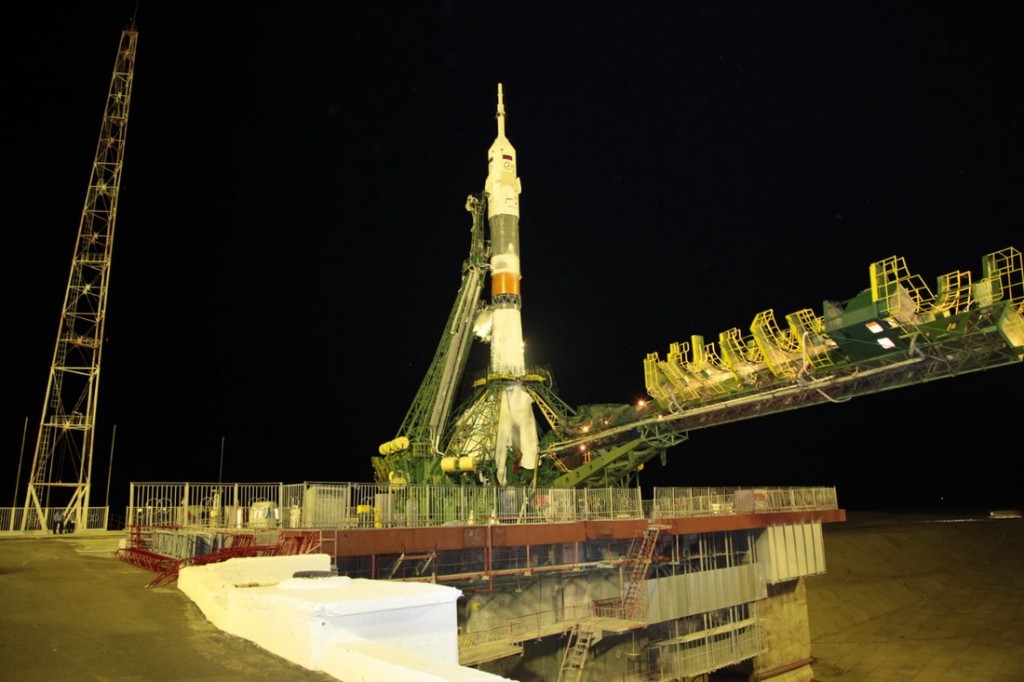
The Payload Fairing protects the Soyuz Spacecraft while waiting for launch at the Launch Pad and during atmospheric flight. It also provides structural integrity for launch abort scenarios and transfers loads from the launch escape system to the capsule.
It is jettisoned two minutes and 40 seconds into the flight when the vehicle passes 85 Kilometers in altitude. At that point, aerodynamic and thermal loads are acceptable for the spacecraft to be exposed after the launcher has left the dense portion of the atmosphere. For Soyuz FG Launches with a Fregat upper Stage, a variety of Fairings are available while the Soyuz Spacecraft is encapsulated in a different fairing that provides access to the capsule.
